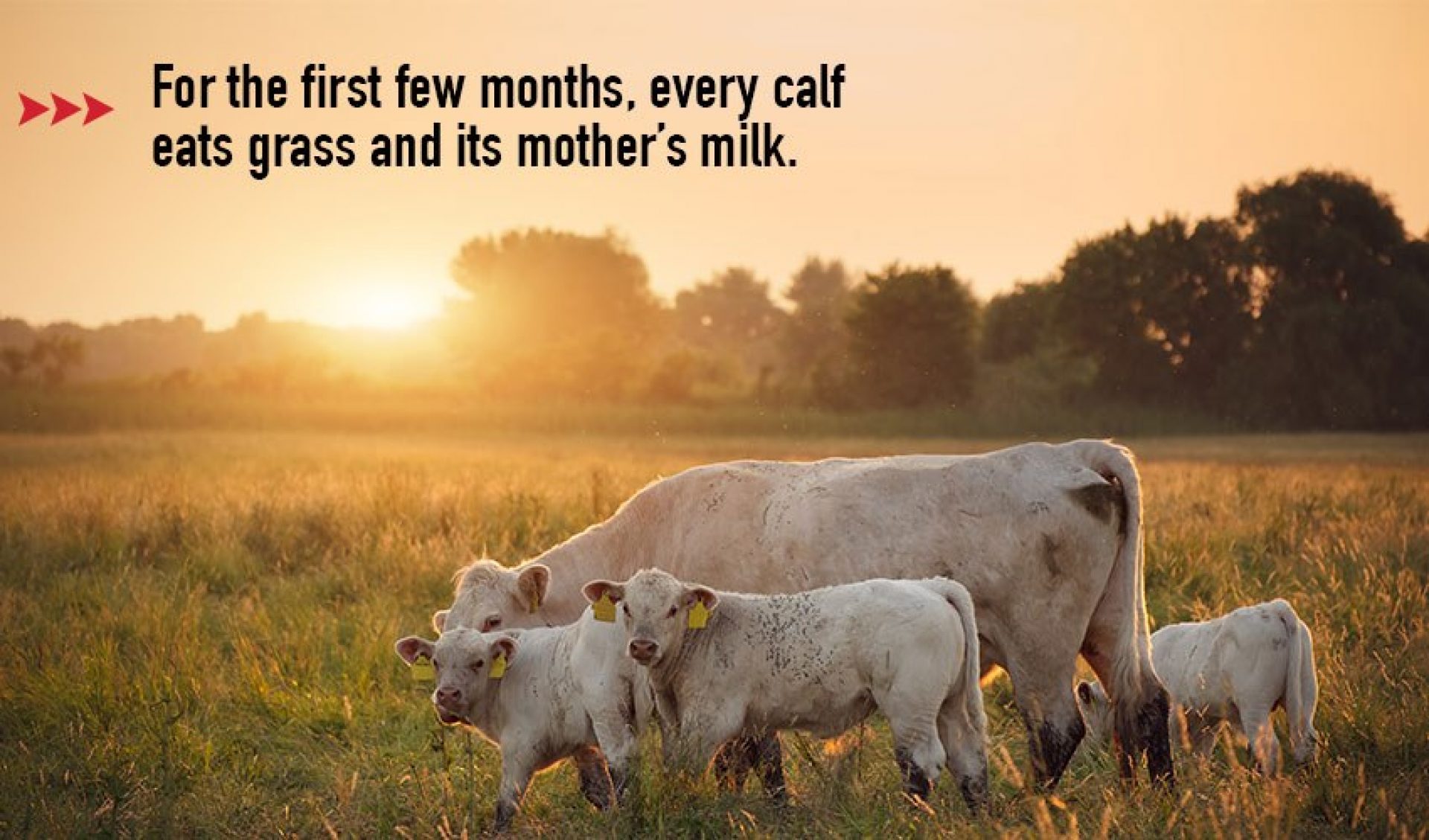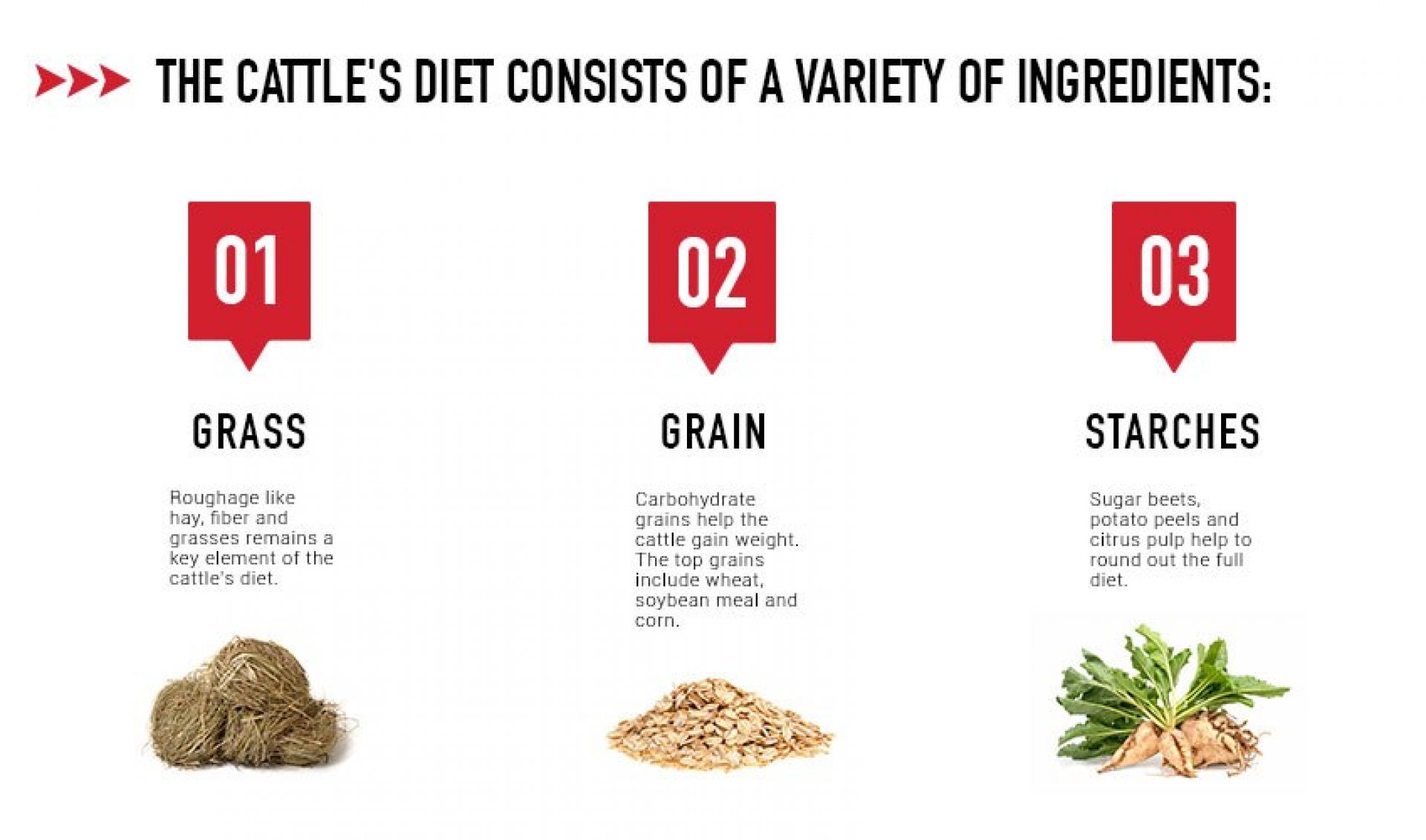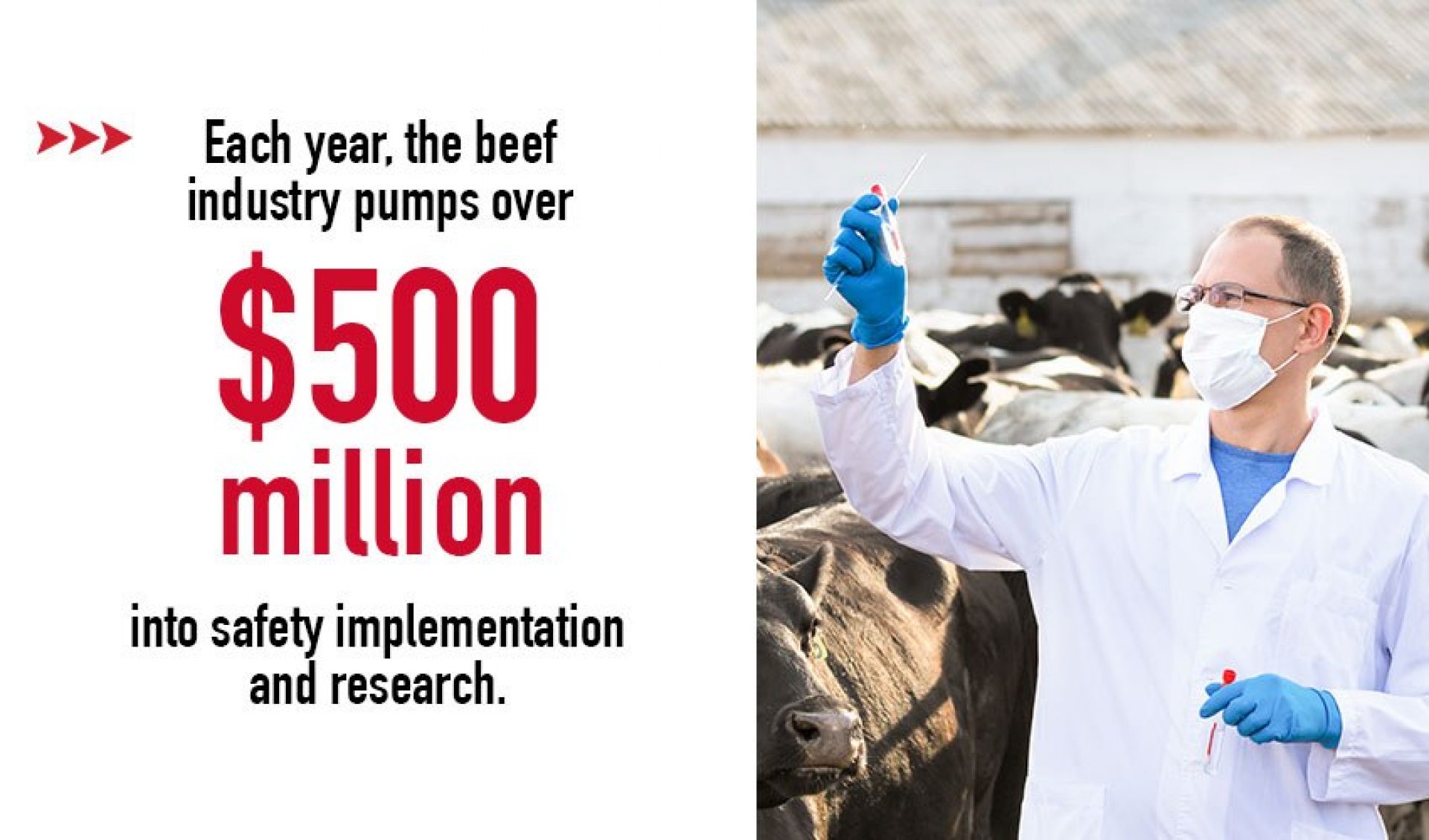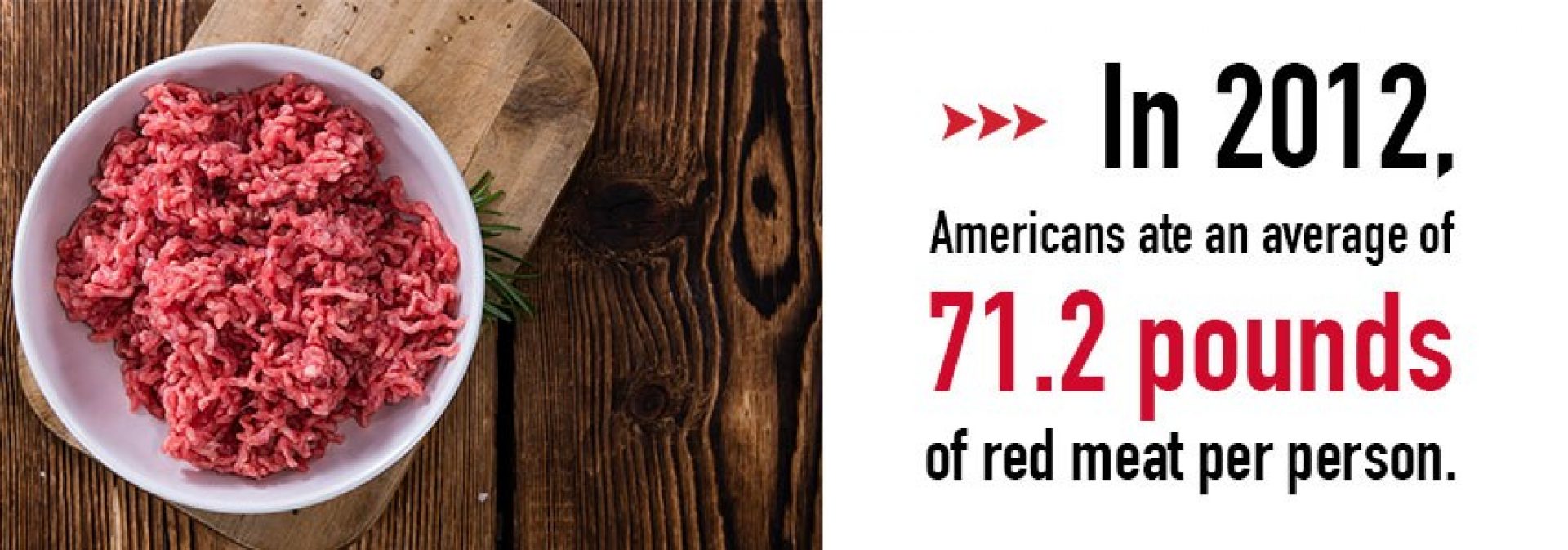Field To Fork: The Lifecycle Of Beef
Understanding Each Stage of the Beef Production Process
Go Back to All BlogsPosted on: June 6, 2017
Updated on: October 21, 2025
Author: Arrowquip
SHARE:
Everybody loves beef. Whether it's a juicy sirloin, beef chuck in a spicy stew, or tangy Maui ribs, beef takes many appealing forms. When ordering an all-beef hot dog, it's easy to forget the journey that beef took to get to your mouth.
Most people don't even consider how beef arrives on their plate. If called upon to answer the question, "Where does your beef come from?" you might say: a farm. Although you're right, there's so much more to explain than that.
At Arrowquip, we find the lifecycle of beef fascinating. Most people might imagine a cow going straight from the field to the fork, but there are many stages in between. Indeed, the process by which a cow becomes a packaged product involves a surprising number of steps.
Consider that a cow lives a full life before it becomes beef. In that time, different steps in the animal's development occur. In the 2-3 year lifespan of a cow, it will change hands 2-3 times. Each step involves workers who specialize in one area of cattle raising. The expertise of the different members of the beef industry highlight the efficiency of the current system. We'll travel along this streamlined path and learn what makes it work so well.
So let's follow the path of beef. After tracing this incredible journey, maybe the next time you order a beef burrito, you'll pause, and appreciate the hard work and dedication of all the people involved in this process. We bet that your next bite of beef will taste even better.
The Beginnings Of Beef
Beef begins when a cow gives birth on a Cow-Calf farm or ranch. This breeding ground oversees the impregnation of healthy cows for the purpose of ensuring successful births. Most fit cows give birth once a year at these farms. Pregnant cows undergo a gestation period of 9 months and give birth once a year. The average weight of a newborn calf sits between 60 to 100 pounds.
The majority of calf births take place in the field. This style lets the animals enjoy a natural birthing process. During the colder months, a breeder will occasionally choose to move a cow indoors to give birth. This method aims to defend the cow and newborn calf from the elements. Harsh weather like rain, snow or freezing winds can result in sickness for the newborn calf, if suddenly exposed after birth.
Another advantage of indoor births concerns medical reasons. If a complication occurs in the field, the rancher cannot quickly attend to the cow's needs. Supervised births, let the farmer administer any life-saving veterinarian methods. In some cases, a rancher even assists the birth by pulling the calf out, though this only proves necessary in extenuating circumstances. As it stands, most births happen in the pasture and turn out fine.
After its birth, a calf receives an identification ear tag. This lets ranchers monitor the calf and later decide whether to sell or withhold the animal. A rancher keeps roughly 33% of the female calves. These cows remain with the rancher and will give birth themselves when they fully develop. Although all calves start out the same, as they grow bigger, their paths diverge.
Weaning
The pastoral setting of a ranch offers a calf its first glimpse at life, along its mother's side. Later, cows will either become grass-fed or grain-fed livestock, but for the first few months, every calf eats grass and its mother's milk. When the calf is 6 to 10 months old, it moves away from its mother's milk. This constitutes the weaning phase.
During this time, they switch from milk to consuming milk and grass, until settling on a pure grass diet. Around this time, a calf has gained significant mass and weighs between 450 to 700 pounds. Once the calves begin to bulk up, they shift to the next stage of their lives. Although all calves start the same, as they grow bigger, this is when their paths start to diverge.

The Selection Process
Once the calves mature, they are separated from their mothers and sorted. Male bulls go into one group and female cows into another. Some members of both genders will become breeding animals. Ranchers choose the members based on desirable genetic traits. By engineering which animals continue to breed, a rancher guarantees a high-quality herd for future generations.
Those animals not deemed members of the elite will become beef. Of course, all the cattle will eventually undergo slaughter for purposes of human consumption. Even the animals selected for producing offspring, after they reach a certain age, will end up on a plate.
In a typical herd, the number of females vastly surpasses that of the bulls. Generally, only 3 bulls are selected to impregnate a corresponding average of 50 females. Whenever a female goes into heat, the male will mate with her — he's ready year-round.
Backgrounding
The cattle not selected to become breeders enter the backgrounding phase. In this stage, they bulk up in weight over time by grazing. This healthy diet and exercise beefs up the herd (pardon the pun). They grow in muscle and strength.
Backgrounding occurs between the first 12 to 16 months of a calf's life. If you've driven down the highway and seen a herd of young, stocky cattle grazing in the field, you've seen backgrounding.
This stage takes advantage of much of America's unusable land. About 85% of pasture lands in the U.S. do not qualify as arable. The cattle industry takes this otherwise unusable land and puts it to work. Background makes the most of those impossible-to-farm areas.
It's helpful to consider the backgrounding stage as the cow's adolescence. It matures into adulthood by building body mass. During the final months of backgrounding, the cattle are introduced to dietary grains.
The cattle adapt slowly to their new diets. Over time, the grasses are replaced by grains. By the end, grain constitutes a quarter of their diet. The gradual change allows the cattle to acclimate to a new diet.
The success of their background becomes clear during the next phase. Cattle need to appear strong and healthy for the rancher to sell them at an auction. Their weight usually sits somewhere around 900 pounds at the end of backgrounding.
Cattle Auction
Going, Going Sold! That famous lightning-speed speech of the quick-tongued auctioneer defines this phase of the beef cycle. When a herd reaches maturity, ranchers take them to market. The auction market marks a major division in the lifecycle of beef. This often represents the first time that cattle change hands.
This intermediary stage gives buyers a chance to purchase cattle at the lowest price. The quality of a herd undergoes speculation, and depending on demand, a price is determined.
Buyers consider several aspects when purchasing cattle. The age, size and breed all constitute major elements of the decision process. What the buyer's intention entails also factors into the choice. The buyer will need to transport the animals to their facilities. Sometimes, the trip can stretch over 100 miles. If the bulls in a certain auction group have large horns, then transportation might prove hazardous. The buyer weighs many such considerations when evaluating cattle.
Occasionally, buyers cut out the middleman. By avoiding an auction market and purchasing directly from the supplier, the buyer can build up a good relationship with a reliable rancher. It also lets the buyer know exactly what they're buying. During the auction, cattle come into contact with animals from other ranches. Exposure to other cattle can result in disease. Although it doesn't happen often, the auction market does require that one observe the Latin rule caveat emptor — buyer beware.
The Feedlot
After being bought at the auction, cattle travel to the buyer's feedlot. The name "feedlot" comes from what the cattle do here — eat. In this final preparatory phase before slaughter, the fully grown cattle consume a bunch of food. The cattle's diet consists of a variety of ingredients, such as:
Grass: Roughage like hay, fibre and grasses remains a key element of the cattle's diet.
Grain: Carbohydrate grains help cattle gain weight. The top grains include wheat, soybean meal and corn.
Starches: Sugar beets, potato peels and citrus pulp help to round out the full diet.
During their feedlot stage, the cattle are grouped in pens. In these pens, they spend a lot of time eating. They also roam around in a space provided for exercise and group interaction. The feedlot also allows for close monitoring of the cattle's health and well-being. Veterinarians ensure the animals appear fit and unstressed.

When first brought to their new home, the cattle need to relax in the environment. They learn where to find their food and water and become accustomed to the pens. In the first weeks, the cattle receive vaccinations and undergo observation for any maladies.
Feedlot facilities house a large number of cattle. Some even maintain the ability to handle thousands of cattle. The feedlot ensures that all these cattle reach an optimal weight of approximately 1300 pounds. As these feedlots represent the final stage before slaughter, they go by the name "finishing houses."
This finishing phase takes four to six months. After this time, the cattle will reach their peak weight. Sometimes cattle will eat a purely grass-based diet for this phase. This type of "grass-fed" beef takes longer to build up the necessary weight, and will. These animals will spend a longer time finishing. Many consumers prefer grass-fed beef for its taste and willingly pay a higher price for the additional work required to produce this product.
The feedlot phase completes once the cattle amass 1300 pounds of weight. They're usually 18 to 22 months old at this time.
Packing Plant
The final stage of beef production before distribution, the cattle enter a processing facility (also called a packing plant). These factories oversee the careful inspection, processing and packaging of beef products.
To ensure maximum safety for workers, the cattle, and consumers, every plant employs inspectors from the Department of Agriculture's (USDA) Food Safety Inspection Service (FSIS). Without these independent observers present, the plant cannot legally produce beef.
The inspector verifies that the animals are physically fit and healthy before being processed. If any animal demonstrates a sign of illness or injury, that animal will not pass. These cattle will not get shipped to consumers. Ensuring food safety defines the role of these inspectors.
Beef producers strive to produce the safest product possible. Each year, the beef industry pumps over $500 million into safety implementation and research. These efforts help to expand our knowledge of production techniques which yield the safest results.

Proper procedure not only creates a safe product for consumers, but it also ensures the correct treatment of the cattle. The inspectors certify that each animal doesn't receive any maltreatment. Processing plants try to reduce any unnecessary stress caused to the cattle. Not only does this approach honor our ethical obligations to the animal, but it also results in a tastier end product.
It's known that when a cattle becomes stressed, adrenaline gets released into its body. This fear chemical has a negative effect on the meat. Adrenaline-spiked meat tastes tough and less flavorful than its relaxed counterpart.
This reaction occurs because adrenaline causes unwanted acids to flood into the animal's muscles. These acids enable a fight-or-flight response and give the muscles an extra boost. If cattle get spooked at almost any point, then their meat suffers.
Adrenaline not only damages the meat before packaging, it also lingers in the animal's system for a long time. If the cattle experience a high stress situation at any point, their meat gets pumped full of unwanted adrenaline. Therefore, it's important to maintain the utmost care to relax and pacify cattle through every stage of their development.
Distribution
The final stage in the life cycle of beef is the one you probably know best. If you've ever shopped at a supermarket, you've participated in this phase: product distribution. When you pick out which cut you want for dinner, you participate in the final leg of the journey.
After the cattle undergo processing at the packing plant, they are butchered and divided into different cuts of beef. Workers at the plant package these separate parts for mass distribution. Depending on their destination, beef will receive appropriate packaging.
Refrigerated trucks bearing the brands of beef retailers pull into the facility, stock up, pull out, and proceed with their deliveries. From there, beef reaches the markets, produce sellers, restaurants and tables of America. In one way or another, it will end up on your fork.
The Cycle Of Cattle Concludes
Everything we've covered results in you eating beef. The purpose of the cycle centers on providing hungry beef lovers with the product they crave. But beef doesn't end there. They call it a cycle because it starts over again, and performs all the steps until it repeats again.

From the beginning, when the calf was born, to the backgrounding, the feedlot and the processing plant, this whole time, the purpose was to provide you with beef.
Well, not just you. After all, Americans love meat. In 2024, U.S. per capita beef “consumption/disappearance” was estimated at just over 59 lb per person. Not too shabby. Beef will certainly remain a core part of the American diet for generations to come.